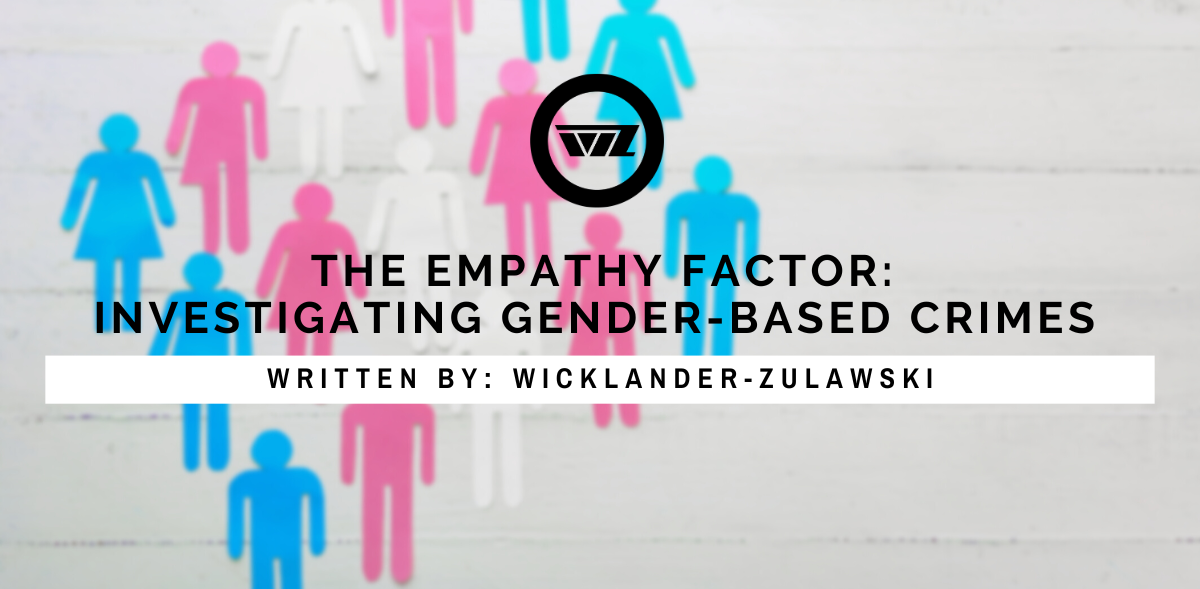Change. A scary word, and a difficult concept to grasp for many. Scarier and more troubling are the following reactions we often hear to a suggestion of change:
“If it ain’t broke, don’t fix it”
“But that’s the way we’ve always done it”
“I’ve been doing this for (X) amount of years”
I’m sure we have all heard some of the above, and probably have even caught ourselves saying it from time to time. As John Maxwell stated “Change is inevitable, but progress is optional.” There are many obstacles on the path to change and one of the most difficult for people to overcome is the ability to understand a perspective different from their own.
Wicklander-Zulawski & Associates prides itself on evolving, adapting and innovating the way we deliver our training and, most importantly, the content itself.
Let’s focus on 5 key concepts that help us progress, innovate and become better than we were yesterday:
Demand to be Challenged
We seem to gravitate toward those with whom we have the most in common. This makes sense – always surrounded by people that agree with our ideas, our motives and our thoughts. We want “likes” on our social media posts, and the more like-minded people we connect with – the more “likes” we get. Although this may result in short-term gratification, how does this help us grow?
It’s important to find people or organizations that don’t necessarily agree with our personal status quo. I’m not suggesting seeking an argument, but demanding to be challenged. Hiring people smarter than you are, connecting with experts outside your comfort zone, soliciting feedback from someone with a different perspective. The goal here isn’t to find opposition, but a different perspective. Ultimately, if we are always hearing “that’s a good idea” then we will never be forced to create a “great” one.
Some of the most rewarding and informative experiences I have had with WZ have been in conversations with representatives of The Innocence Project, Center on Wrongful Conviction of Youth and other advocates for wrongly convicted or those in the academic sector. On the surface, it may appear that there are conflicting intentions here, but the insight gained on both sides of these conversations is instrumental in creating change and inspiring a collaborative movement forward.
Your Challenge: Find a person, or a group that isn’t directly aligned with your thoughts and ideas. Don’t look for an argument but search for a different outlook on a common goal.
Seek Common Goals
Even though we may have a specific disagreement or point of contention with another person, or group, we still may very likely have a common goal. An obvious example of this is the discussion of gun rights as it relates to the multiple shootings in recent months at schools or other public events. If you dare to read any comments on a news article or post on social media about these issues, all you’ll see are stark contrasts in opinions. Often, these comments and arguments take on a life of their own and people start focusing on defending their opinion while attacking others. If we take a step back from the argument, we would realize that in some capacity we all want the same thing – safety in our schools and the preservation of life. We may have completely different suggestions on how to get there, but we have a primary common goal.
This is an obvious phenomena when it comes to personal relationships as well. Two people in a relationship get into an argument about a topic and tend to get emotionally invested on proving each other wrong. Ultimately what’s forgotten is that the increased emotions are caused by their struggle to maintain and improve their relationship; if that’s not the goal than why have the argument? In a business, new ideas or challenging thoughts may come across as threatening or unorthodox, but the primary goal of the conversation is improving the business. When we are so determined or provide our own point, we tend to forget the actual goal.
Your Challenge: Look at the ‘argument’ from a high level and determine what each group is trying to accomplish. It may be surprising to see that there are multiple pathways in obtaining the same goal.
Remove Your Filter
Nothing can be seen without a filter anymore – not even your Instagram pictures. When we look at something through our biases it makes it nearly impossible to ever be flexible to change. Understanding what causes our bias and being able to see around it is crucial when seeking feedback or suggestions of improvement. The most difficult part of trying to remove our own filter is first acknowledging that we have one. Taking a step back from the situation and recognizing the angle at which you’ve approached it may help this cause.
The importance of removing our own biases couldn’t be any more obvious than in an interrogation or interview. The investigator walks in to the interview room with several filters; evidence pointing towards a theory of the crime, prior history with the subject, or witness testimony. Even more damning could be the violent nature of a crime and the emotional attachment an investigator has in representing the victim. All of these pieces stacked up together make it difficult for the investigator to see through them clearly and isolate the truth from the subject versus their interpretation of it.
When investigators can remove their biases, or at least be aware of them, it provides the ability to clearly see the subject’s perspective and allow their statements to either corroborate, disprove or course-correct any pre-conceived theory.
Your Challenge: Determine the angle at which you are approaching a subject, and attempt to change your perspective. Looking at something from other viewpoints may enlighten your own. Ask yourself “If I were in their shoes, how would I feel about this situation?”
Listen to Understand
The natural instinct in an argument is to argue and defend one’s own opinion. This method, one of stubbornness, gets us nowhere. A more productive approach is to listen, understand and ask for more clarity. In fact, if we are entering an argument with the goal of proving our own point and refusing to listen to others – why have the discussion at all? Active listening is a skill that needs practicing and may require feedback from those we interact with most.
This is another common obstacle for investigators, especially if they engage in a confrontational interrogation. If an investigator is always planning on how to counter, shut-down or re-direct the subject they may be missing valuable pieces of information. It is essential for investigators to obtain reliable information, and depending on the context of the conversation the best way to do this is by listening.
One of the major benefits to a cognitive interview is allowing the subject to provide an untainted narrative which provides the opportunity for them to freely recall a situation without any contamination from the interviewer. The same can be said for an argument, a sales pitch or a conversation with a co-worker – listen with a goal of understanding versus attacking.
Your Challenge – In your next conversation, test your ability to listen to somebody’s story or argument without interrupting. Stay engaged, but focus on listening first and responding second.
Don’t React, Reflect
Reacting immediately to somebody with an opposing viewpoint tends to create further conflict and increases the emotional investment in the conversation if not done tactfully. Taking the time to reflect on the other perspective can be helpful in fully comprehending their point of view. This can be done by asking clarifying questions to elicit further information or summarizing your understanding of their opinion for confirmation. This process of seeking understanding shows respect to the other side of the argument, genuine interest in their perspective and provides you with the most amount of information when making a decision.
Hindsight is 20/20 – and our vision is the most blurred when we’re in an emotional conversation attempting to defend our own opinion. Having the ability to reflect back on the issue gives us the most clarity. Our justice system applies this principle as judges and juries take time to deliberate and review case law and all available evidence or testimony before arriving at a decision. If a jury was asked to provide their current stance on a verdict on a daily basis, it would establish confirmation bias and show the danger of forming an opinion without all the information. Once we’ve established and verbalized our decision, it is that much more difficult to ever change.
Your Challenge: In your next conversation involving differing opinions, new ideas, or even an interview – ask clarifying questions and provide a summary statement at the end. This will show your genuine interest in their thought process and provide you with more clarity on the information provided.
Following the above steps is not easy, nor does it always prevent an argument or guarantee change will take place. Disagreements, debates and differing opinions are essential in the growth of a business, a person or an investigation. Some ideas aren’t worth pursuing, some information gained may not be true and sometimes it isn’t the right time to change – but taking the proper partners and following the right steps will provide the most comprehensive thought process when daring to take the next step.
David Thompson, CFI, is the President of Wicklander-Zulawski & Associates, Inc. (WZ). He is responsible for the day-to-day operations of WZ, as well as strategic planning and the evolution of interview and interrogation content. David has also served as the Director of Investigations giving him the opportunity to manage a variety of cases while conducting interviews and consulting on investigations ranging from theft and fraud to sexual harassment and homicide. As a speaker for WZ, David has created customized training programs, presented at seminars, hosted a variety of webinars as well as conducted live broadcasts of training.




